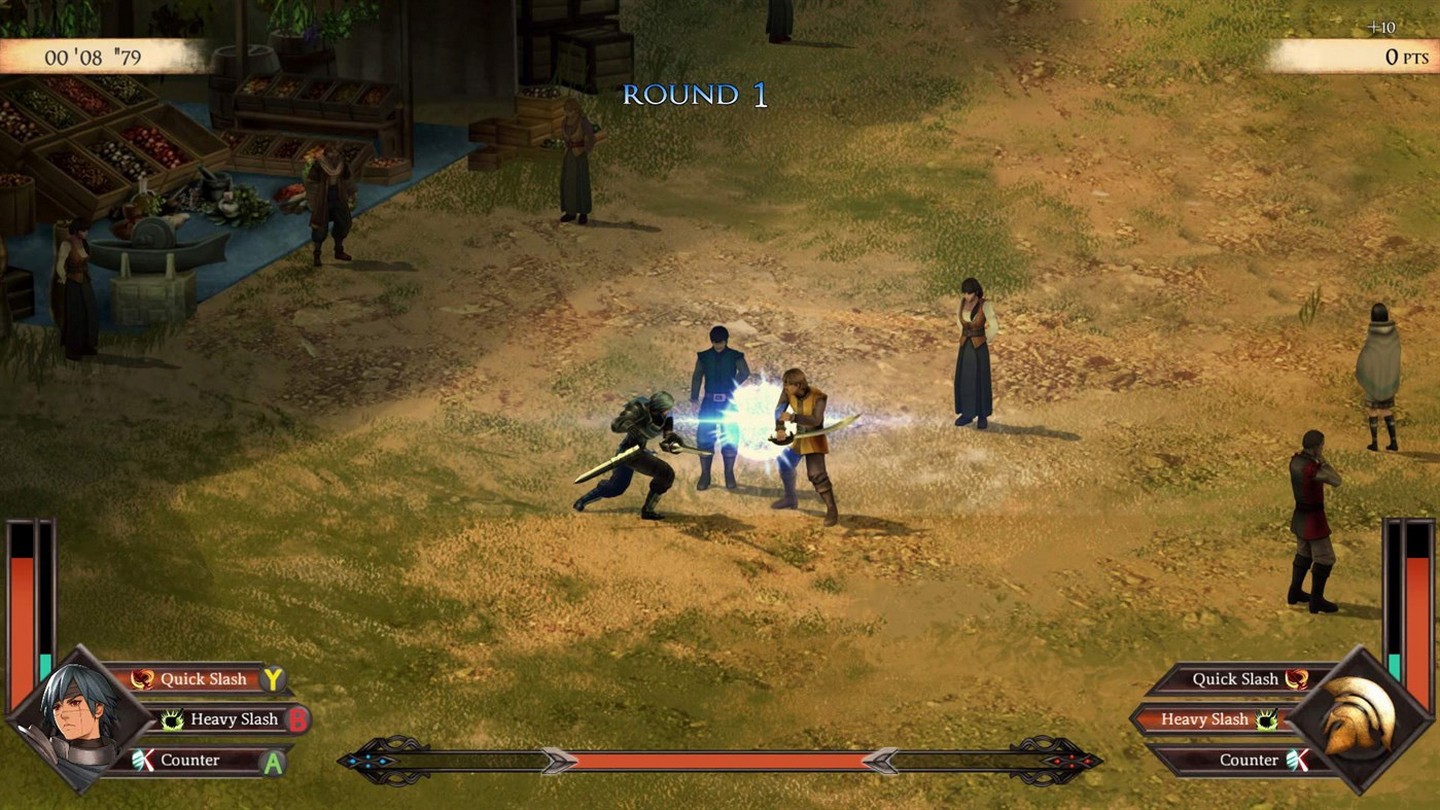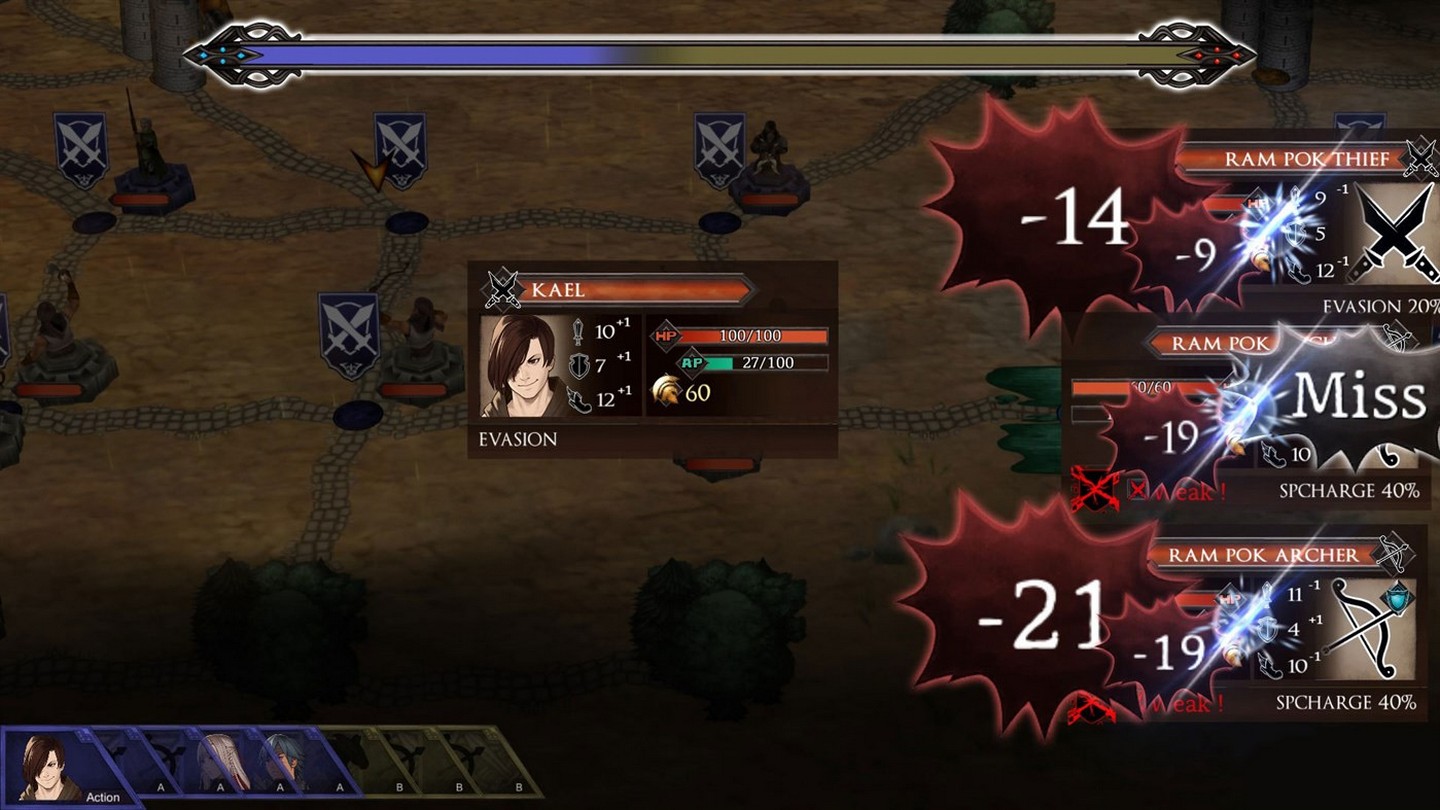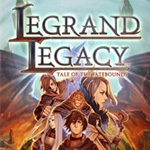From the past, but in the future
Legrand Legacy wears its inspirations on its sleeve and really sticks to its goal of trying to make an RPG from the classic PS1/PS2 era. This is both good and bad in some instances, where the game makes me feel nostalgic but also makes me realize why games have evolved through the years.
Players are introduced to Finn, a recently released slave that doesn’t remember much of his past, but has spouts of recollection, who is thrown into this dying world to help save it with another companion he meets who is tasked by a god to stop the second coming of a world destroying evil. While the story with the characters feels a bit paper thin, the overall world and world building are well done.

Platforms: XB1, PS4, Switch, PC
MSRP: $19.99
Price I’d pay: $19.99
Legrand Legacy features a turn-based battle system where players queue up moves and watch them play out. It also features a timing based attack system that players will have to push a random button when a spinner lands on the sweet spot to either do standard damage, reduced damage, or a critical hit. The combat is not just that – each enemy has a weakness, and exploiting that weakness can interrupt their turn. Since a full turn plays out for each side, it is important for players to use this to their advantage by either using their weakness against them or switching one of the three active party members in battle to a different one that has an ability that is part of the enemy’s weakness. It’s a simple system, but has many moving parts to it.
Experience points go towards the character levels. When leveling up, players can distribute points into the character’s attributes. Doing this will obviously make the character better in certain aspects, but they can also learn new moves and attacks by increasing a certain stat to a certain number. It’s a simple way of learning new abilities, and it works well since the game shows the player what skills and abilities are up for learning and what the threshold is for the stat.
One thing that always got to me was the archaic way to handle items in battle. Players must assign four kinds of items to each character before getting into battle. There is no going through the entire inventory during battles. Characters can only use the items they have been equipped with. This leads to me running out of items during boss fights.
The art style also tries to push into that nostalgic feel. The pre-rendered backgrounds are hand drawn, and with a single camera angle players move their character on the screen going from entrance to exits. Much like games of the past, it can get a little bothersome when not being able to see the character or realize the distance from the camera, so getting into accidental fights because I couldn’t gauge how far away an enemy was on the screen happened more times than I would have liked.
Along with the standard combat, there are also larger scale battles that take place where players move units around on a board to represent parts of an army. Each unit, much like the standard battles, have strengths and weaknesses so the tactics play out similar to the regular fights.

This is a story-driven game, which means its legs are based on how good the story is. While I think the story itself is fine and kept me engaged, the dialog and characters felt very stock. They fall into the JRPG tropes and one of the main characters, Aria, feels so paper-thin I still see almost no reason as to why she’s doing what she is other than she was tasked with doing it. The world and lore are all well done,even when exposition feels like it is taking up a lot of time. I just wish the characters had a little more depth to them.
Overall, Legrand Legacy is a decent game. It’s never overly difficult and the look and feel of it really does come off like a classic JRPG from yesteryear, for better or for worse. It works, and even if it does get tiresome in spots, the story and lore are engaging enough to keep RPG fans afloat, but keep in mind, you’re going to have to change your mind set a bit before taking this one on. If you can turn your brain back a few years to the early 2000’s you may find yourself an enjoyable RPG.
Review copy of game provided by publisher.
